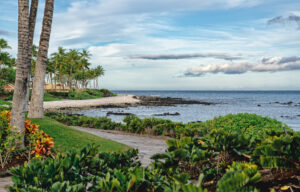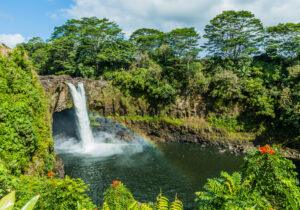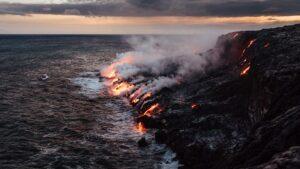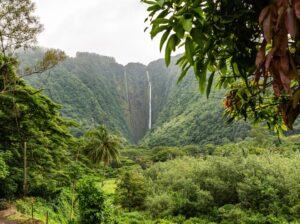On September 1st Kailani Tours Hawaiʻi will start offering the Volcano Hiking Adventure which includes the Kilauea Iki Trail and Thurston Lava Tube at the Hawaiʻian Volcano National Park.
Here’s an interesting article on the 1959 eruption of Kilauea Iki from National Park Service.
Kīlauea Iki crater may look tranquil these days. But in 1959, this now 400-foot (120 m) crater held a seething lava lake that spewed fountains of molten lava thousands of feet into the air. Considered by some to be the most spectacular eruption event of the 20th century, Kīlauea Iki provided a unique opportunity for geologists to study the plumbing system of Kīlauea volcano.
Geologists began to anticipate an eruption in the middle of August 1959 when the Hawaiʻian Volcano Observatory (HVO) recorded deep earthquakes within Kīlauea volcano. By October, HVO measured a signficant inflation at the summit due to the pressurization and “filling” of magma into its reservoir. By the next month, activity had dramatically increased and there were thousands of earthquakes being recorded everyday – a clear indication that magma was on a path to the surface. The frequency and intensity of the earthquakes increased up to the start of the eruption on November 14.
Imagine standing at the edge of the scenic Kīlauea Iki Overlook and witnessing the sudden, deafening roar of red-hot lava blasting skyward. The eruption began when a curtain of lava burst from a half-mile (0.8 km) long fissure, or crack, along the forested crater wall. Within a day, multiple vents along the fissure consolidated into one main vent. Over the next five weeks, fountains of lava gushed from the vent in 17 separate episodes. The highest of these fountains was a record 1,900 feet (580 m) high. Molten rock flooded the crater, creating a lake of lava that rose halfway up the crater walls, burying the initial fissure. Within days, tephra from the fountains of lava congealed to form a brand new cinder cone called Puʻu Puaʻi (translates to “gushing hill”). As cinder and spatter rapidly accumulated to form Pu‘u Pua‘i, slabs of congealed spatter occasionally broke loose and slid down the cone into the churning lava lake.
When the lava lake grew higher than the vent, fountains stopped erupting. Molten lava drained back into the vent, dragging pieces of the lake’s crust with it.
This dark “bathtub ring” can still be seen on the crater walls today. Lava often poured back into the vent four times faster than it was erupted, generating a noisy whirlpool of red-hot, liquid lava and black slabs of solid rock. These continuous drainback events and the natural convection currents of the lava formed the crater floor that visitors can walk over today.
Today, over 60 years later, you can witness the remnants of one of the most spectacular eruptions in modern times. Although the Kīlauea Iki crater has completely solidified, magma continues to pulsate throughout the volcano. Geologically speaking, it is not unlikely that we may witness an eruption like this again.
.




